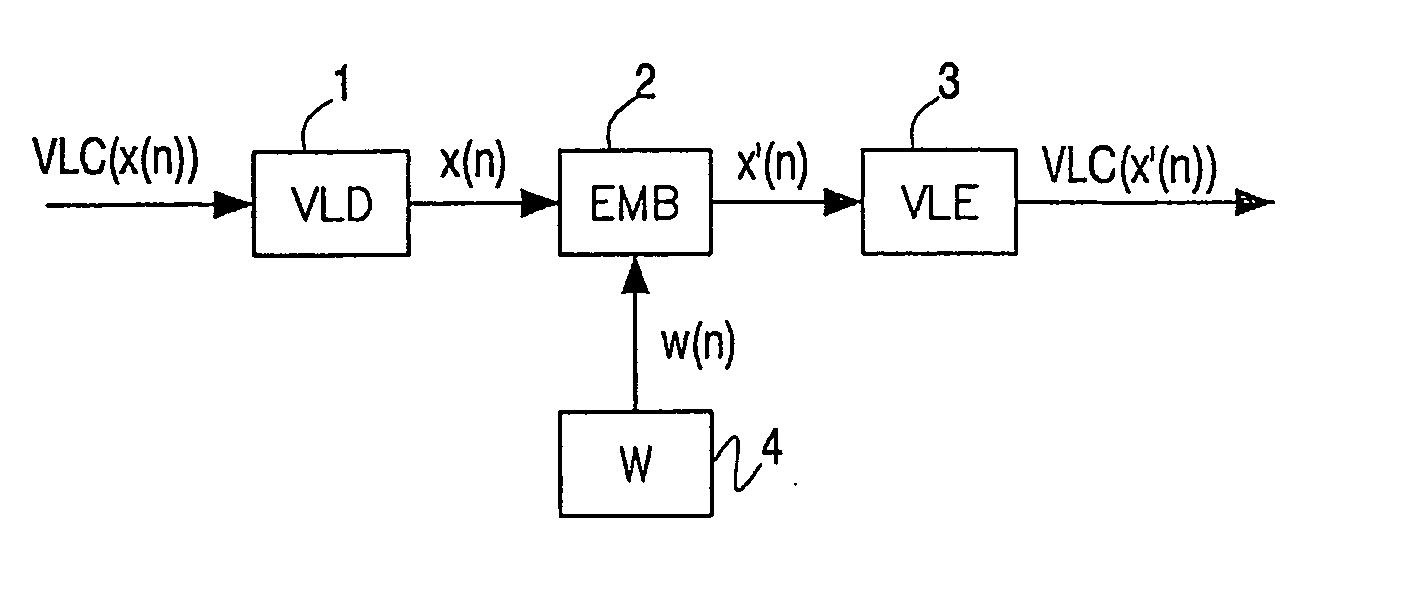Embedding a watermark in an image signal
a technology of image signal and watermark, applied in the field of image signal embedding, can solve problems such as too large modification
- Summary
- Abstract
- Description
- Claims
- Application Information
AI Technical Summary
Benefits of technology
Problems solved by technology
Method used
Image
Examples
Embodiment Construction
[0017]FIG. 1 shows a schematic diagram of an arrangement for embedding a watermark in a media signal according to the invention. The arrangement comprises a variable-length decoder 1, a watermark embedding stage 2, a variable-length encoder 3, and a watermark buffer 4. The arrangement receives the media signal in the form of variable-length code words VLC(x(n)), each representing a sample x(n) of the media signal. The samples may be DPCM samples, or Fourier or DCT coefficients, of an audio, video or data signal. An example of a series x(0) . . . x(12) of signal samples x(n) as decoded by the variable-length decoder 1 is shown in FIG. 2A (the indexes n are shown at the top of FIG. 2A).
[0018] The watermark W to be embedded is a series of watermark samples w(n). It is stored in the watermark buffer 4. FIG. 2B shows an example of a series of watermark samples w(0) . . . w(12). It will be assumed in this example that the arrangement performs additive watermark embedding. This means that...
PUM
 Login to View More
Login to View More Abstract
Description
Claims
Application Information
 Login to View More
Login to View More - R&D
- Intellectual Property
- Life Sciences
- Materials
- Tech Scout
- Unparalleled Data Quality
- Higher Quality Content
- 60% Fewer Hallucinations
Browse by: Latest US Patents, China's latest patents, Technical Efficacy Thesaurus, Application Domain, Technology Topic, Popular Technical Reports.
© 2025 PatSnap. All rights reserved.Legal|Privacy policy|Modern Slavery Act Transparency Statement|Sitemap|About US| Contact US: help@patsnap.com



